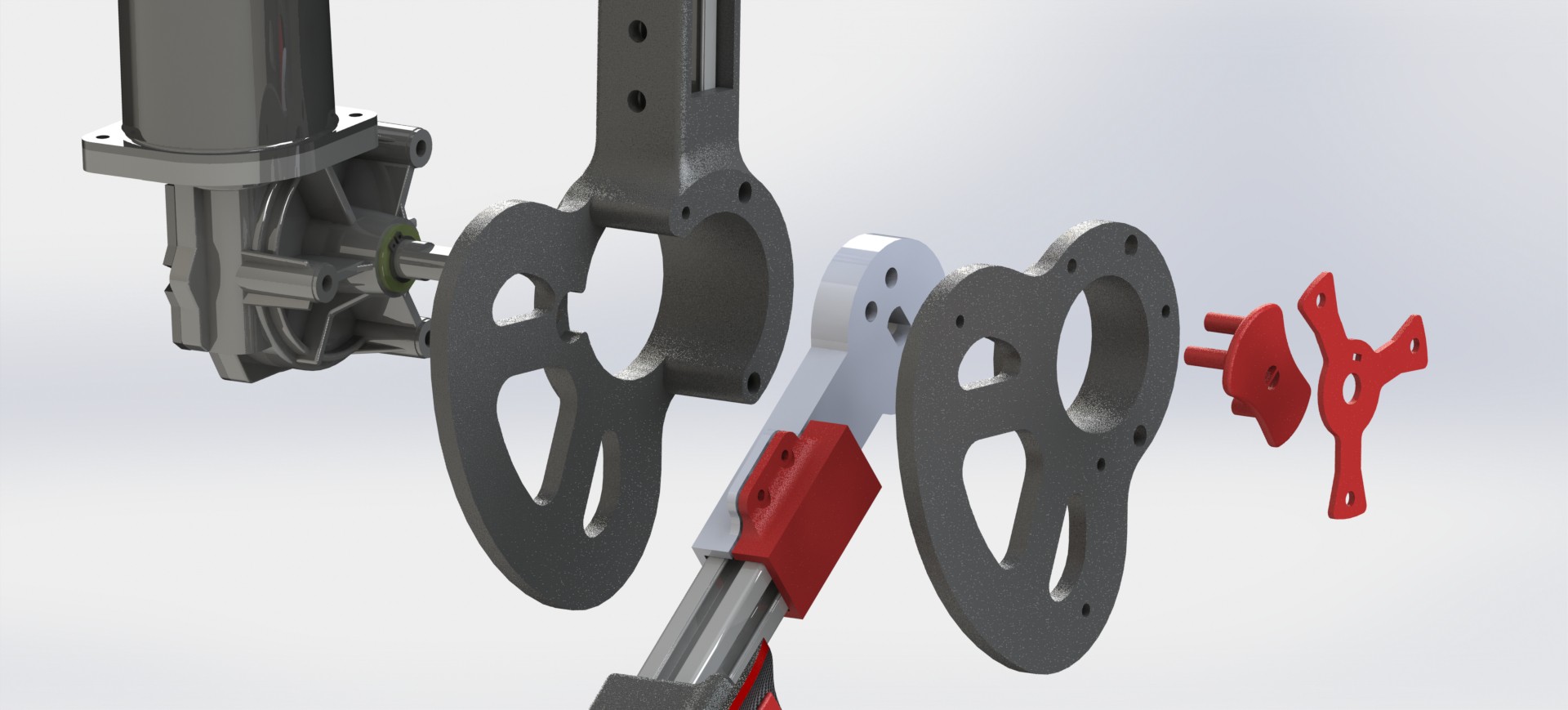One of the most important evolutions undergone was focused on the joints, which are the unions between the motor and the profiles transmitting the movements to the legs. These unions were constantly getting broken when mechanically-demanding movements were performed. Throughout the years some partial solutions for this problem have been tested focused on local manufacturing, considering limited budgets, in order to find the right design, components combination and operation conditions.

Aiming to maximize the material resistance, while keeping the manufacturing process simple, we started using 3D printed pieces on PLA for the first iteration, (although we suspected the resistance would not be what we needed) because we knew it would still provide valuable information to move forward. This material was later replaced with Aluminum but it was found to be very expensive to make all the parts out of this material. The next material candidate we tried was Nylon + Carbon Fiber, which merged the advantages of PLA and Aluminum, but its sensitivity to humidity and abrasiveness were too high. Finally, we came up with the best solution (so far): ABS + Carbon Fiber. One of the nice properties of this material is its low plastic deformation and abrasiveness together with its humidity resistance; additionally, it profits from a nicer finish.
Because of the nature and difficulties that 3D Printing presents, it seems like iterations and manual destruction are not only a practical approach but maybe an appropriate process in finding the desired balance between manufacturing process and material resistance.
We can currently advise you to use ABS + Carbon Fiber, but please let us know if you find something else which might work even better!
 Jesús Tamez-Duque
Jesús Tamez-Duque
Discussions
Become a Hackaday.io Member
Create an account to leave a comment. Already have an account? Log In.